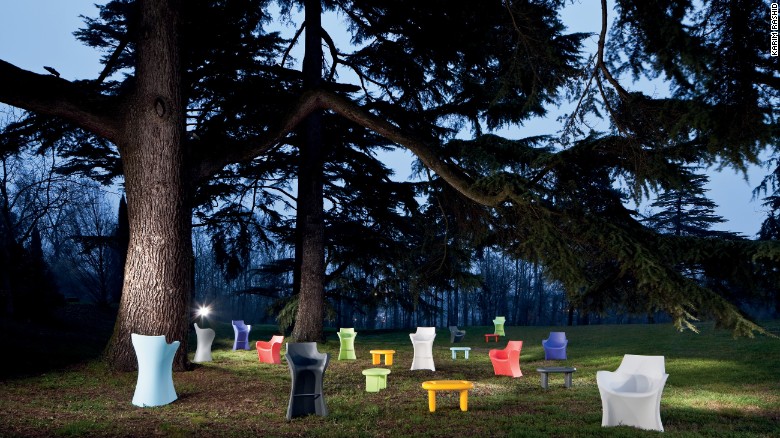3D printing is a method we use often at my studio. Using CAD programs and our in-house 3D printer, a prototype is available instantly. Thought becomes form.
To realize and shape an object in 3D space allows me to experience and interact with a product and revise as needed. It is indicative of the rapid prototyping across the design industry. An object is created in the moment, and its evolutionary process is guided seamlessly.
Objects now are inspired by digital space and its vernacular. Many new forms have never been possible to make before the development of CAD programs and new modes of manufacturing. A few of my design projects come to mind, each representing the transitional phase of design we inhabit.

The Woopy armchair, made for B-LINE, is one solid, sensual piece of roto-molded plastic. The Solium lamp, made for Artemide, is similarly a flowing, curvaceous single shape. Today, digital technology can add emotion and meaning to the flat dull world that modernism shaped.
Let's not forget that the world we live in now was completely designed in 2D. I grew up in that world using a T-square, triangles and other obsolete design tools. Hence our built environments are a result of designing in 2D. Our world is mostly Cartesian, with grids controlling our lives.
Credit cards are rectangular to fit into the 1.6 million ATM machines in the world. When I designed credit cards for Citi bank I desperately tried to change the form of the card but I was restricted by this condition. When I design refrigerators for LG electronics, TVs for Samsung, kitchens for Rastelli and Aran, I must stick to a gird to meet the present formats created by the 2D world.
Most architecture is 2D consisting of 2D components like flat windows, window frames, doors, baseboards, drywall, cladding panels, etc. these materials grew out of the economy of means and capabilities of the machine age, being cheaper to produce something was with straight cuts and two-dimensional surfaces.
No comments:
Post a Comment